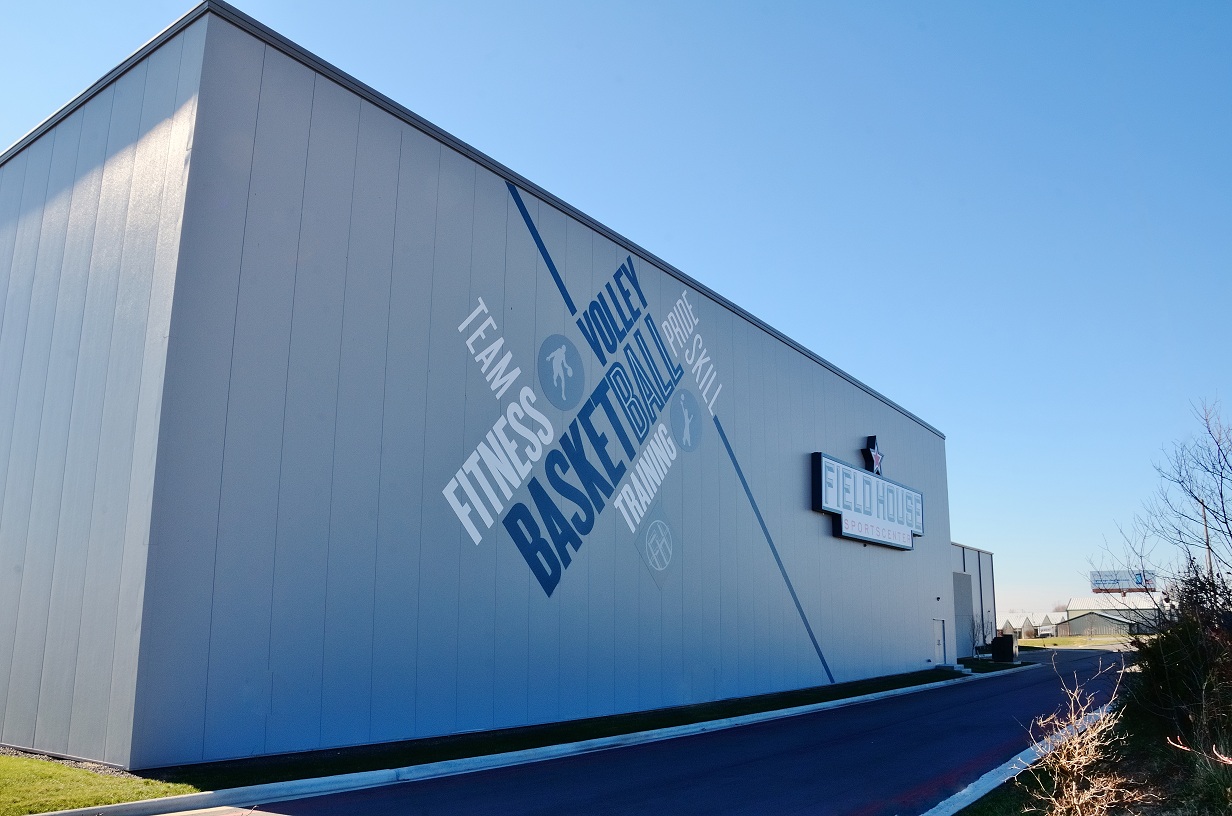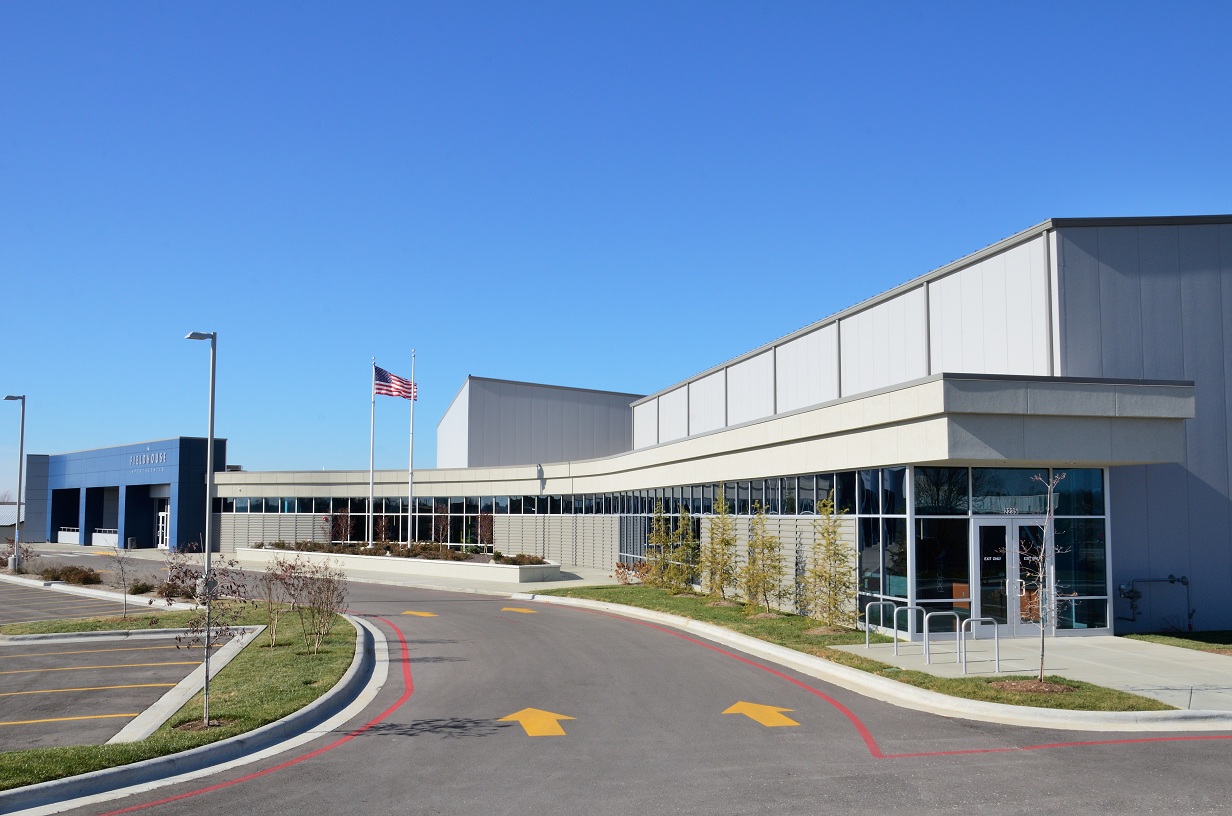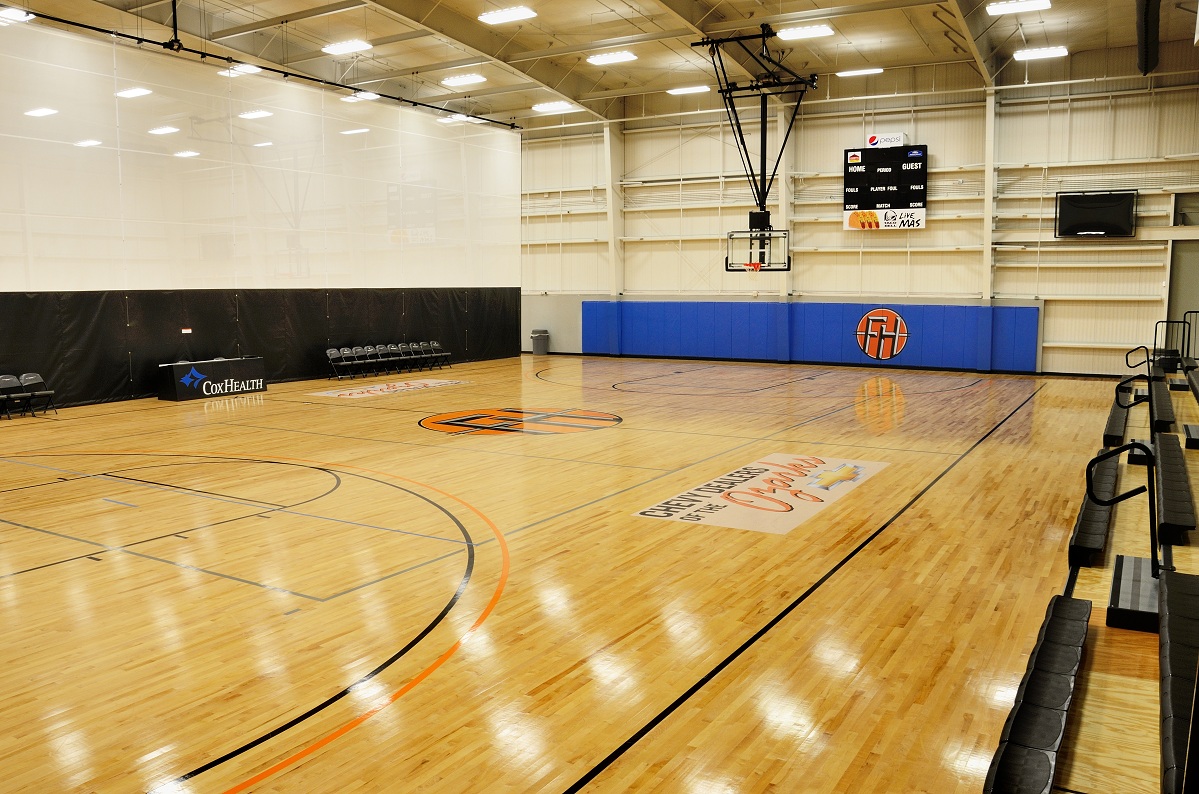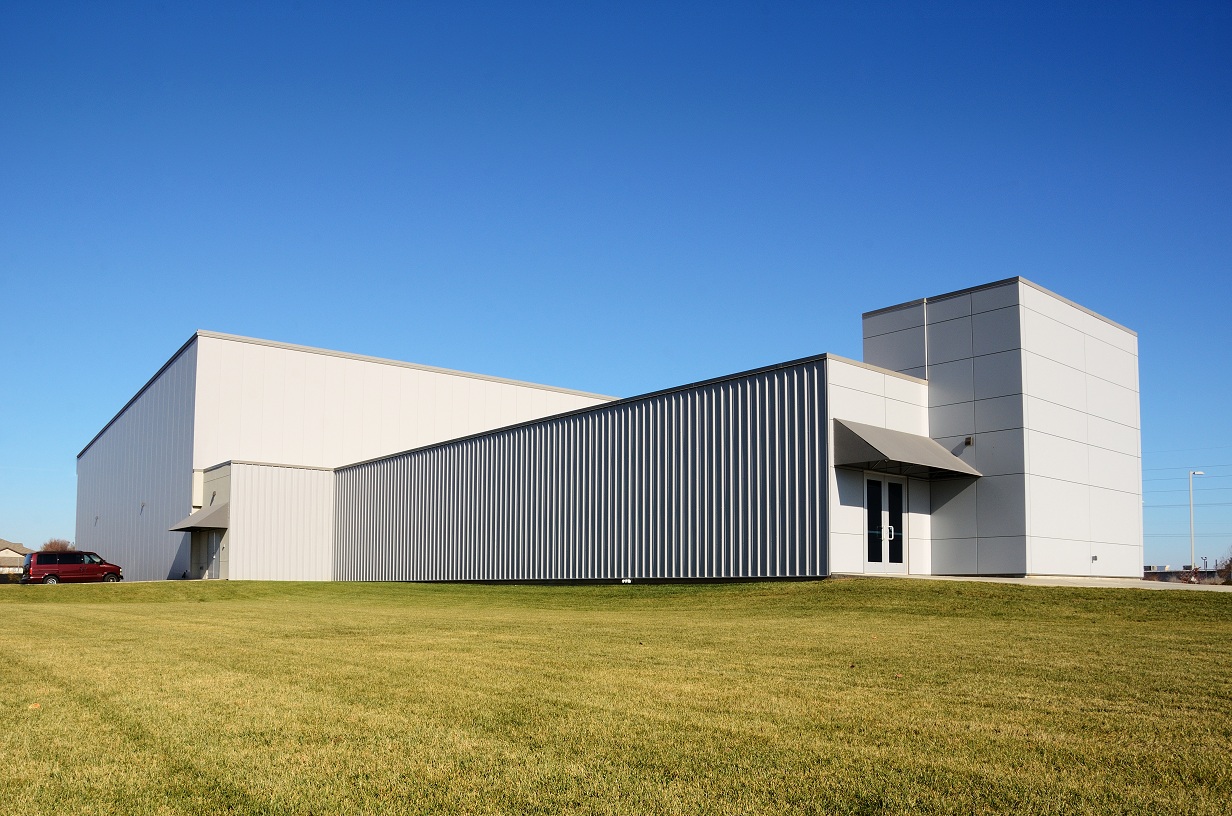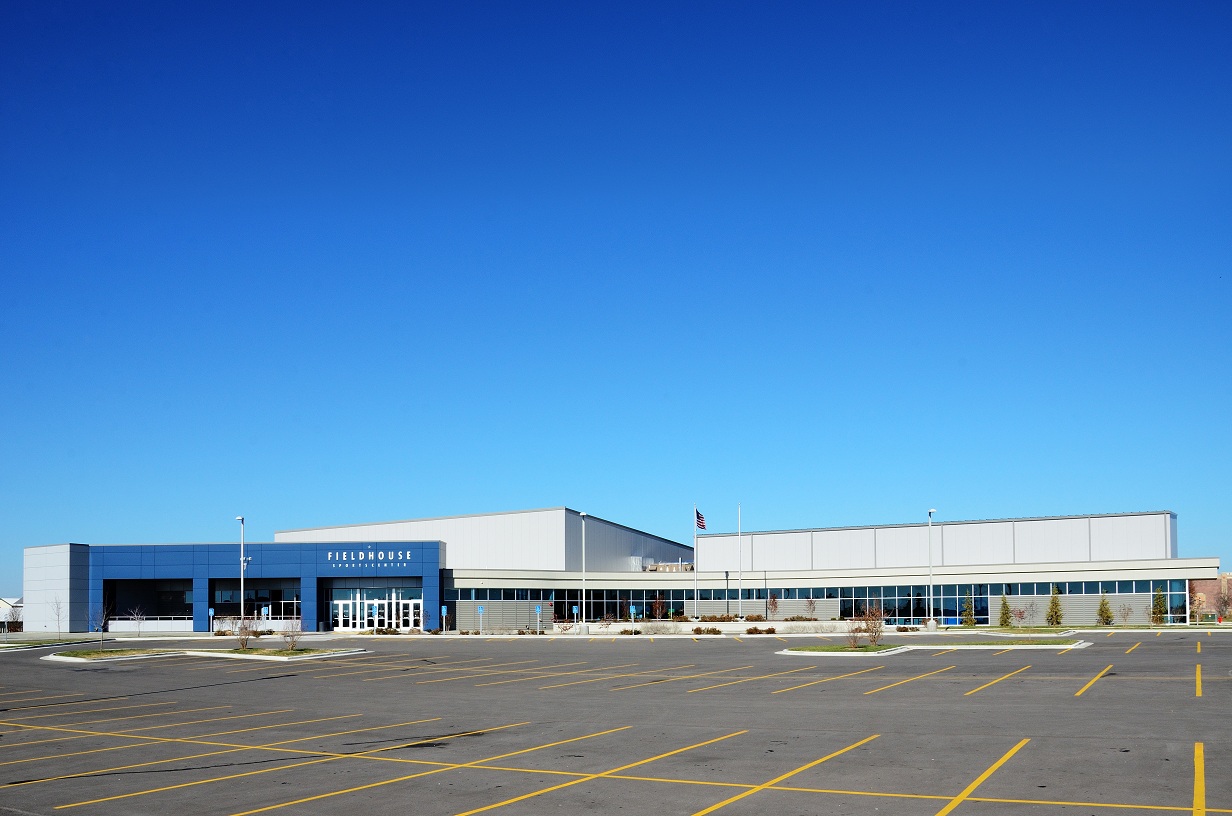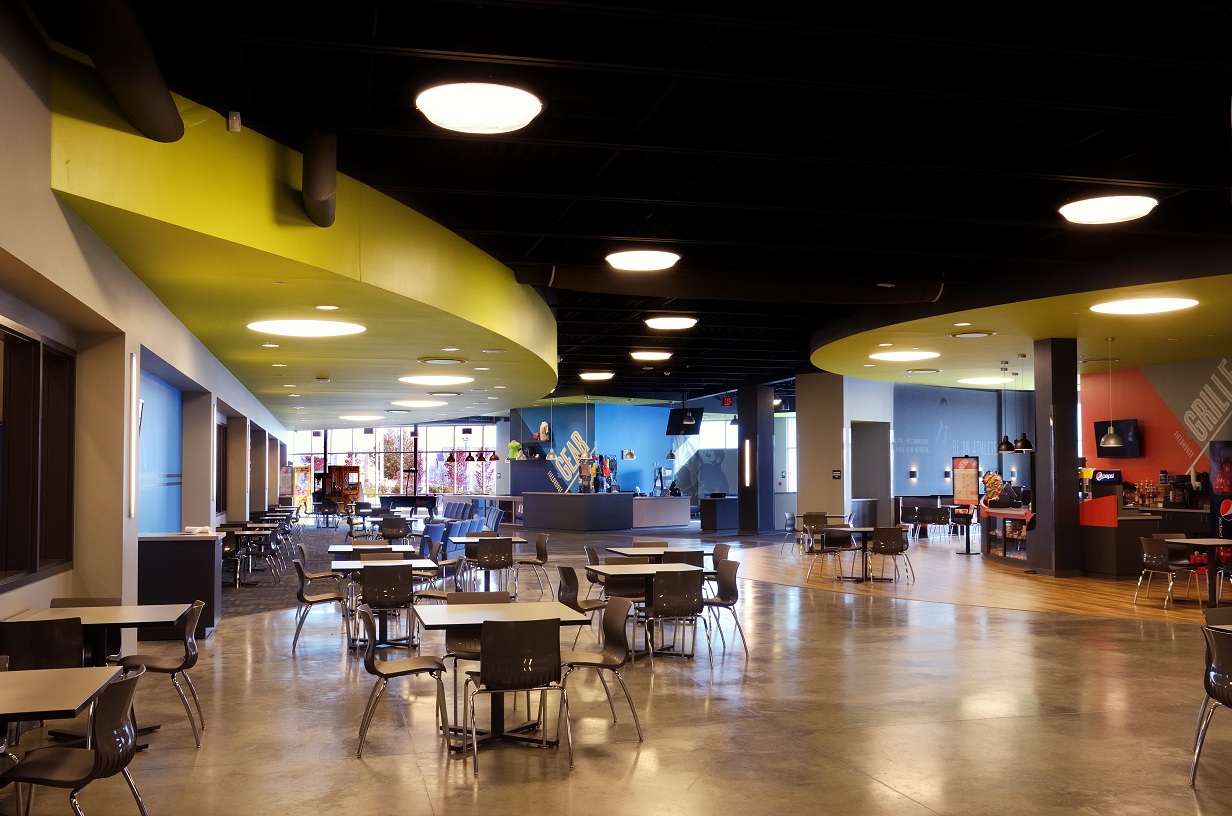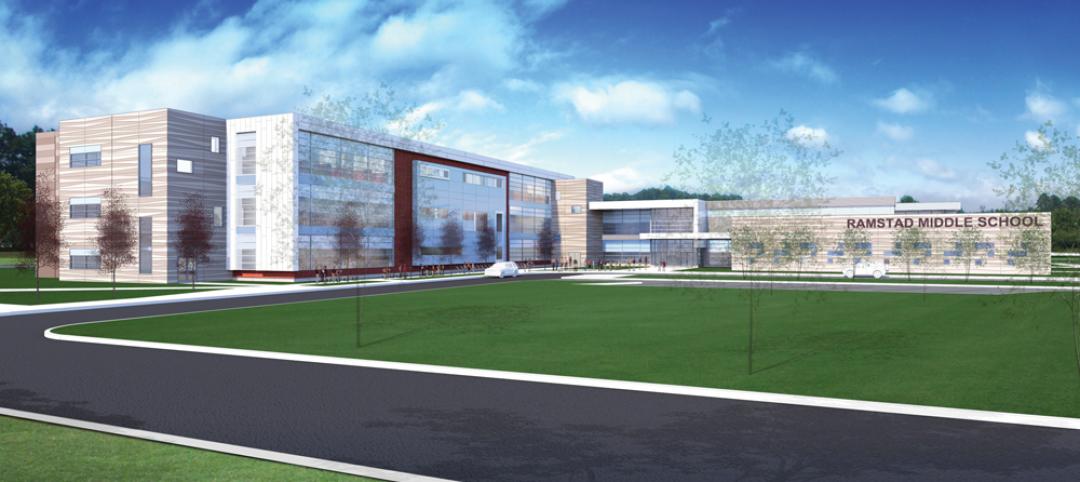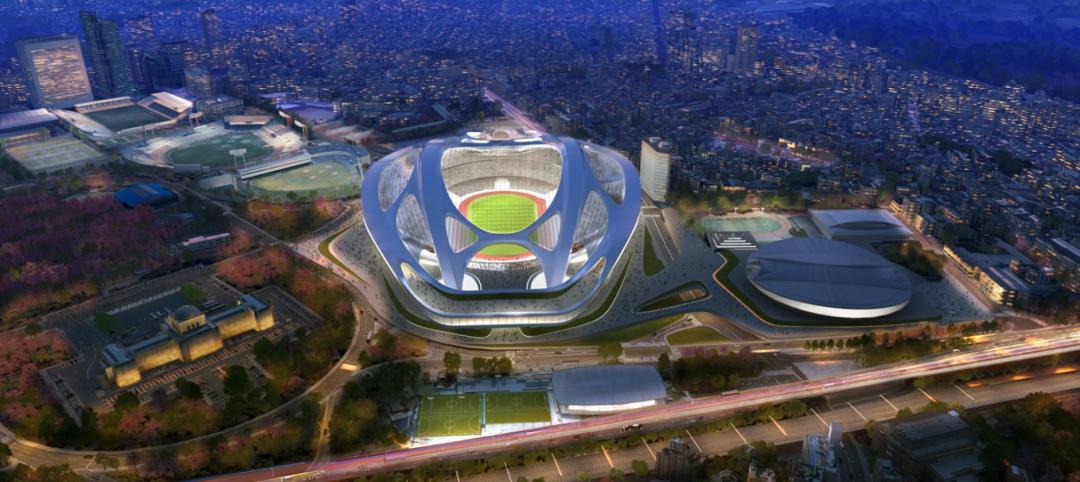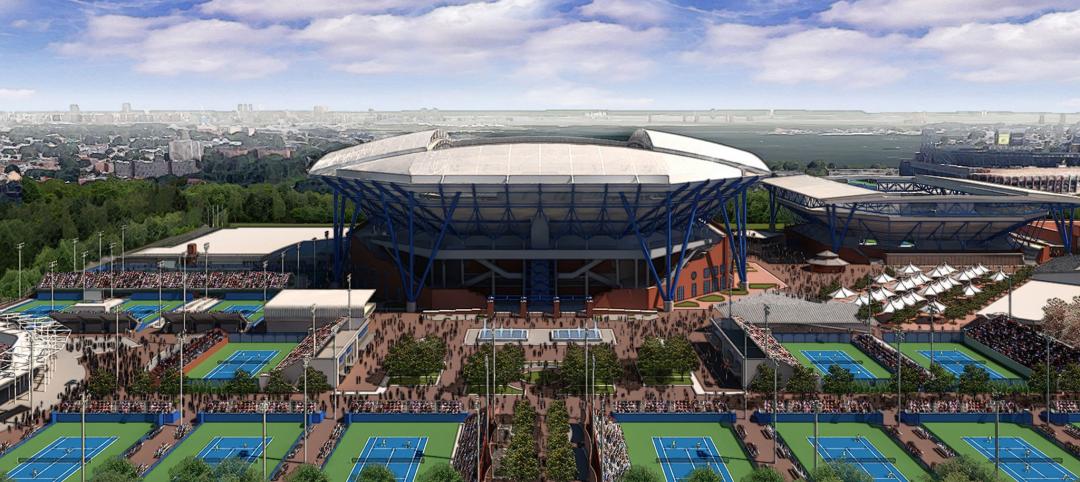Basketball and volleyball take center stage at The Fieldhouse Sportscenter, a multi-purpose sports facility in Springfield, Mo. Attracting student athletes and families from throughout the Midwest, the 46,000-square-foot complex hosts youth basketball and volleyball leagues and tournaments as well as a range of community events and gatherings.
Two separate metal gym buildings accommodate a total of four full-size basketball courts or six volleyball courts. The structures are connected by a structural steel building that provides a common gathering area that includes a restaurant with indoor and outdoor seating, a video arcade, four party/conference rooms and storage areas.
“There were a lot of different elements that had to be tied in correctly to make the three different buildings work together effectively,” says David Ross, director of operations and project manager at Morelock-Ross, the Star builder that led the construction. “One of the most unique elements of this project is the energy-efficient envelope, which includes three-inch-thick insulated metal wall panels and a Simple Saver roof liner system with additional insulation.”
Contributing to the design aesthetic, the buildings combine several different custom exterior finishes.
“The project was designed to provide a distinguished façade along the James River, emphasizing the dynamics of activity and movement,” says Todd Bolin, project architect at H Design Group. “The design intent was to simplify the form and structure of the buildings and tie in the ideals of competition, sportsmanship and camaraderie through murals, signage and apparel.”
Located on a prominent site in the growing southwest part of Springfield, The Fieldhouse adds significant capacity to the city’s youth sports venues and attracts visitors from a 10-state Midwest region.
“There is a facility on the north side of the city that was busting at the seams,” says Craig Naugle, MD, a local physician and the primary investor in the project. “We knew there was a need, and my wife and I wanted to invest in the community that way. It’s really working well as a community center.”
Operating year-round, the facility is able to host upward of 70 teams per weekend in a single venue.
“I think it’s just a great place for families to get together,” Naugle says. “We also have community rooms that people can rent for birthday parties, lunch meetings, business groups and church lock-ins.”
Naugle’s primary goal was to raise the bar for youth sports facilities by providing an authentic playing atmosphere for athletes and their families, many of which travel several hundred miles to compete.
“It provides a much better flow than other facilities I’ve seen around the country,“ he says. “Most facilities tend to be barn-like structures, with a bunch of gyms stacked on top of each other. You get a lot of whistle noise, and kids are constantly distracted. What’s amazing about our facility is that once you’re in the common area looking through the windows, you can hardly hear anything in the gyms.”
The Fieldhouse also offers courtside seating and privacy curtains to provide acoustical separation between the courts.
“When people come here from out of state, they uniformly say they’ve never played basketball in a facility this nice. I hear that time and time again when we host tournaments,” he says.
Naugle is also blown away by the energy efficiency of the facility.
“Our utility bills are at least 25 to 30 percent less than we thought they would be when we were estimating that in our business plan,” he says. “It’s pretty remarkable.”
The complex was designed to accommodate future expansion through a second construction phase that will add an additional two gyms.
Project Credits
Owner/developer: Midwest Events Center LLC
General contractor: Morelock-Ross Builders Inc.
Architect: H Design Group LLC
Civil Engineer: Anderson Engineering
Structural Engineer: Mettemeyer Engineering LLC
MEP Engineer: Colvin Jones Davis LLC
Related Stories
| Jul 18, 2014
Top Architecture Firms [2014 Giants 300 Report]
Gensler, Perkins+Will, NBBJ top Building Design+Construction's 2014 ranking of the largest architecture firms in the United States.
| Jul 18, 2014
2014 Giants 300 Report
Building Design+Construction magazine's annual ranking the nation's largest architecture, engineering, and construction firms in the U.S.
| Jul 17, 2014
A new, vibrant waterfront for the capital
Plans to improve Washington D.C.'s Potomac River waterfront by Maine Ave. have been discussed for years. Finally, The Wharf has started its first phase of construction.
| Jul 8, 2014
Does Zaha Hadid’s Tokyo Olympic Stadium have a design flaw?
After being criticized for the cost and size of her stadium design for the 2020 Olympics in Tokyo, a Japanese architect points out a major design flaw in the stadium that may endanger the spectators.
| Jul 8, 2014
Frank Lloyd Wright's posthumous gas station opens in Buffalo
Eighty-seven years after Frank Lloyd Wright designed an ornamental gas station for the city of Buffalo, the structure has been built and opened to the public—inside an auto museum.
| Jul 7, 2014
7 emerging design trends in brick buildings
From wild architectural shapes to unique color blends and pattern arrangements, these projects demonstrate the design possibilities of brick.
| Jul 7, 2014
A climate-controlled city is Dubai's newest colossal project
To add to Dubai's already impressive portfolio of world's tallest tower and world's largest natural flower garden, Dubai Holding has plans to build the world's largest climate-controlled city.
| Jul 3, 2014
Arthur Ashe Stadium the latest to tap Birdair
The United States Tennis Association (USTA) and ROSSETTI, the architect of record for the Arthur Ashe Stadium, tapped Birdair to supply a 210,000-square-foot, PTFE membrane, retractable roof, expected to be installed by 2016.
| Jul 2, 2014
First Look: Qatar World Cup stadium design references nomadic heritage
Organizers of the Qatar 2022 World Cup, the Supreme Committee for Delivery and Legacy, recently unveiled designs for the second stadium.
| Jul 2, 2014
Emerging trends in commercial flooring
Rectangular tiles, digital graphic applications, the resurgence of terrazzo, and product transparency headline today’s commercial flooring trends.


